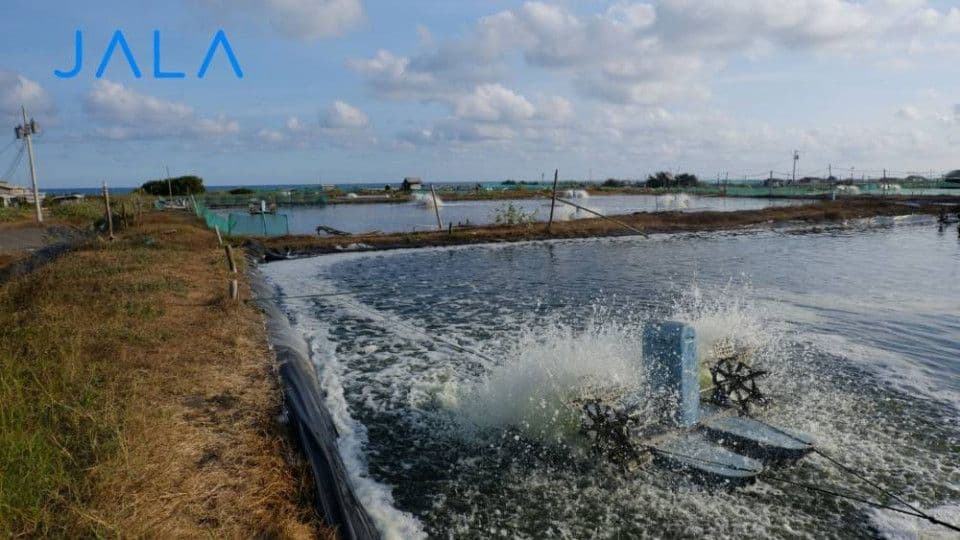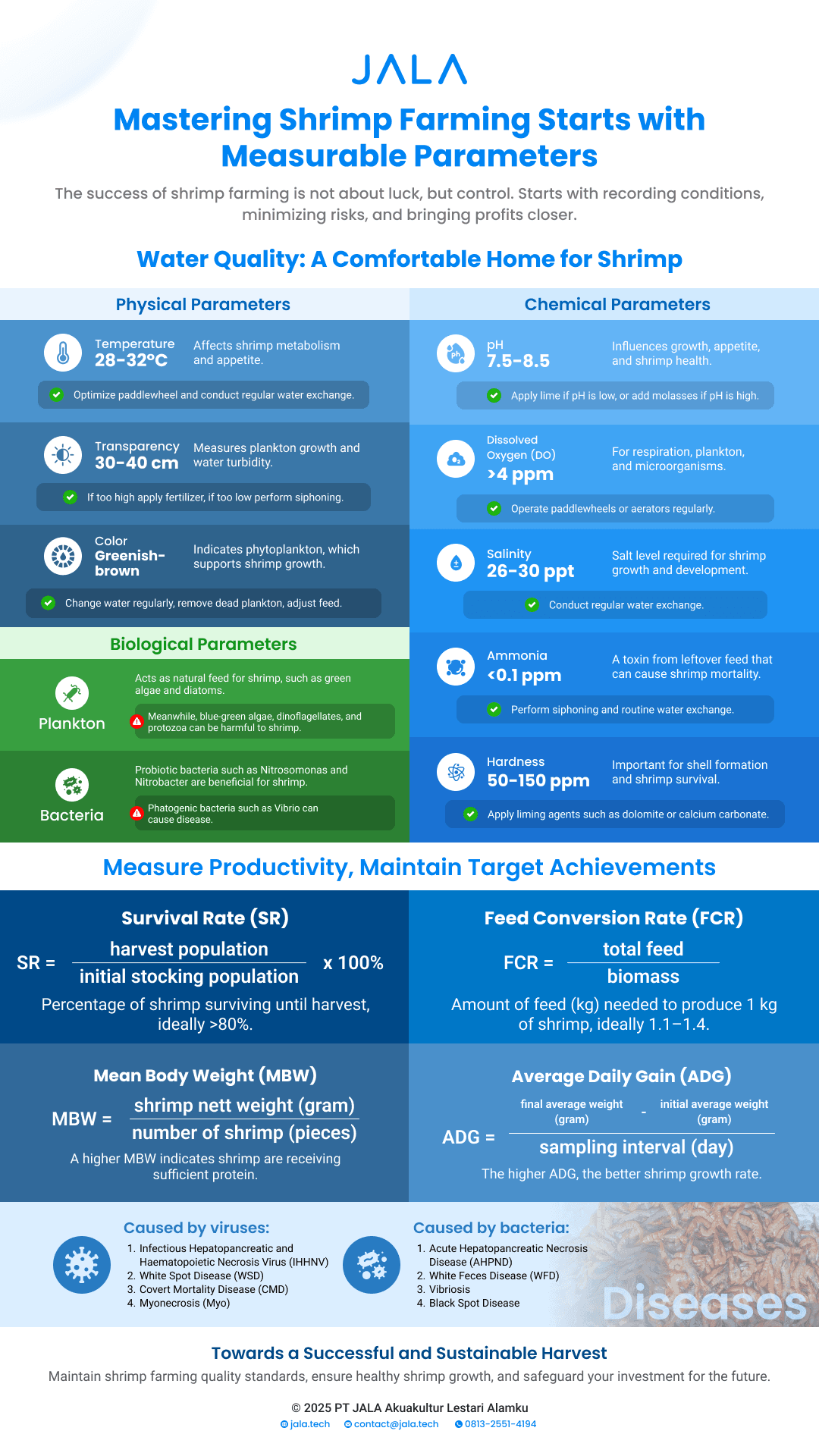
What factors should be observed to maintain shrimps’ health in the pond?
Monitoring the condition of shrimp farming pond water, as well as the dynamics of its changes on a daily basis, is important. This is done to prevent problems on the shrimps, as well as keeping them healthy and free from any disease. There are at least seven pond water data that must be monitored regularly in order to identify and control cultivation risks.
The color of pond water
The ideal color for shrimp pond water is leaf green or light brown. Meanwhile, the colors to avoid are reddish brown and bluish green. Observing changes in pond color is particularly crucial since changing pond colors indicate unstable pond conditions, which can induce stress on shrimps.
The brightness of pond water
The ideal brightness in a shrimp pond ranges from 25 to 40cm. If the pond’s brightness is less than 20cm, sunlight will penetrate less deeply, causing the water temperature to drop and the photosynthetic activity of algae to be less than optimal. Meanwhile, brightness above 40cm allows too much sunlight into the pond water, which the shrimps dislike.
Pond water's pH
The pH or acidity of shrimp pond water should be between 7.5 and 9.0. It should also be noted that the pH value’s stability significantly affects the dynamic of pond water biota. Shrimps can be stressed by significant pH changes in one day.
Pond water's alkalinity
Alkalinity or water hardness is the ability of water to neutralize additional acid without lowering its pH (Alaerts and Ir. S. Sumentri S.). The alkalinity level of the shrimp pond water must be monitored since shrimp and plankton growth demands a stable pH. Furthermore, alkalinity also serves as a reservoir of organic carbon, so it is often referred to as a water fertility factor.
Dissolved Oxygen in pond water
Oxygen in shrimp pond water is one of the major factors that affect shrimp growth. Therefore, make sure that the shrimps are not deprived of oxygen throughout the day. Oxygen monitoring should be done at night, when plankton also need oxygen, because the dissolved oxygen value will normally drop.
Pond water's salinity
Shrimp pond water with low salinity might cause shrimp growth rates to be lower than their potential. In addition, daily salinity fluctuations must be maintained in order to avoid stressing the shrimps. The decrease in salinity is usually caused by fresh rain, while the increase in salinity is usually caused by sunlight evaporation.
The water temperature of pond water
Water temperature affects shrimps’ activity, appetite, and growth. The optimal temperature for shrimps’ appetite and growth ranges from 28 to 30 degrees Celsius. A significant drop in temperature is frequently followed by the death of a large number of shrimp. On the other hand, when there’s a drastic rise in the temperature, shrimps become more sensitive to numerous diseases, putting them at risk of death.

Information about the water quality parameters above is not only crucial to record, but it should also be compiled, compared in series (from time to time), analyzed, and evaluated.
Recording all of these factors and organizing them into systematic information is definitely not easy. Fortunately, JALA App is available to make it easier to input, store, and process the data into valuable information for monitoring and evaluating the ongoing cultivation cycle. Potential issues can be detected as early as possible with regular monitoring and periodic evaluation of pond water conditions, allowing for appropriate interventions to prevent cultivation failure.
-
References: Andi Sahrijanna dan Sahabuddin, isw.co.id, ternakpedia; nanobubble.id, pradiptaparamita, Wikipedia, Jala.tech





